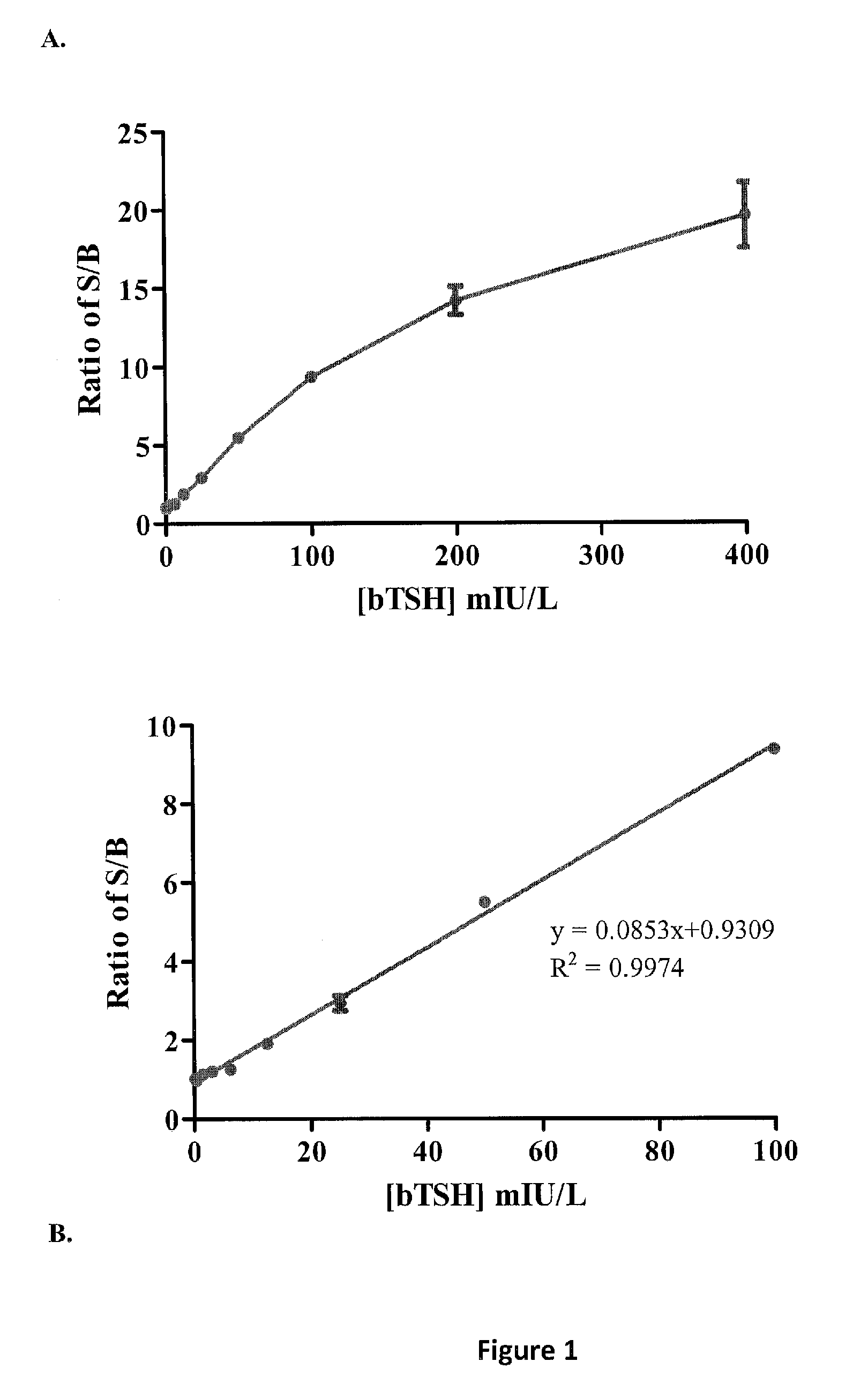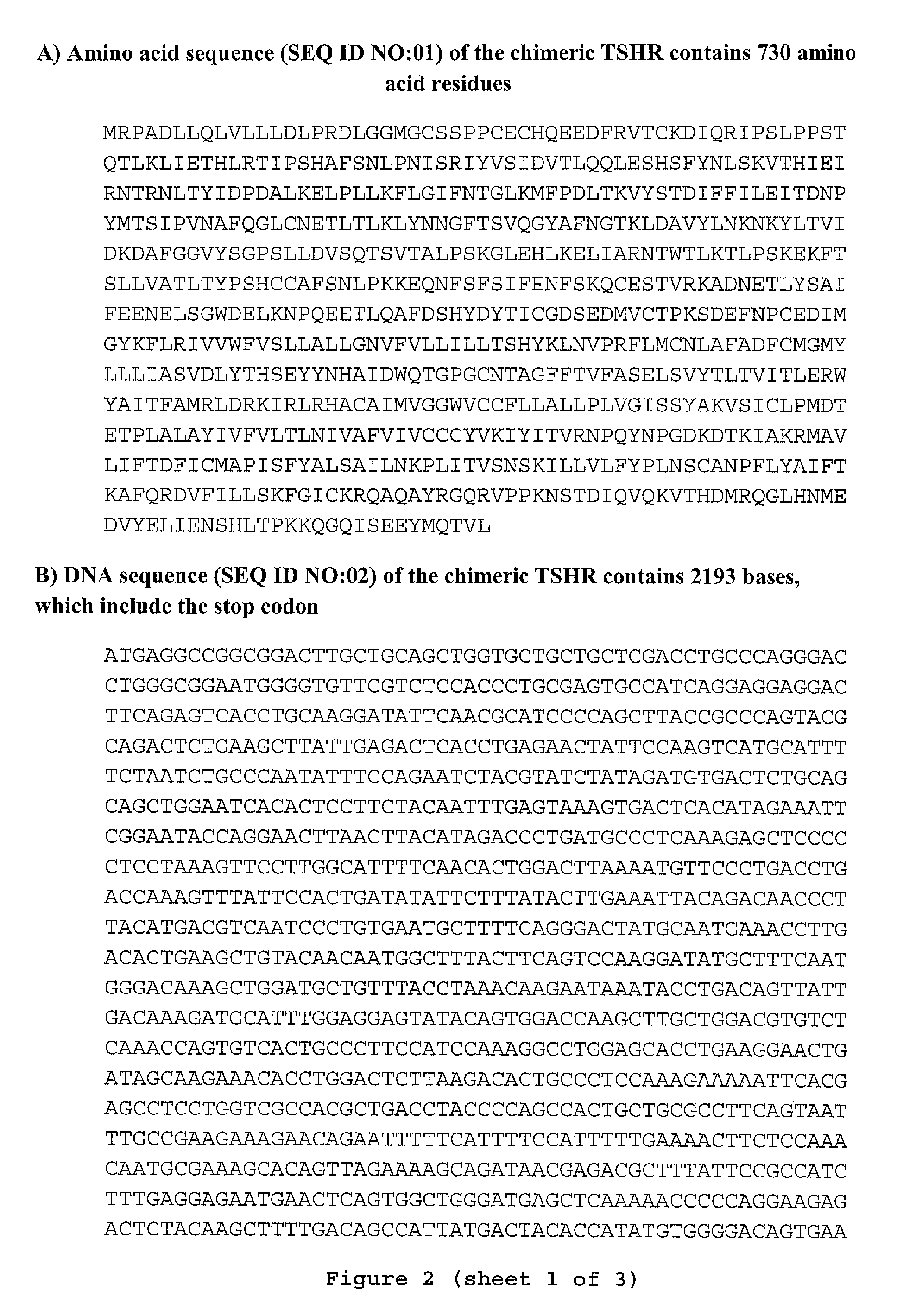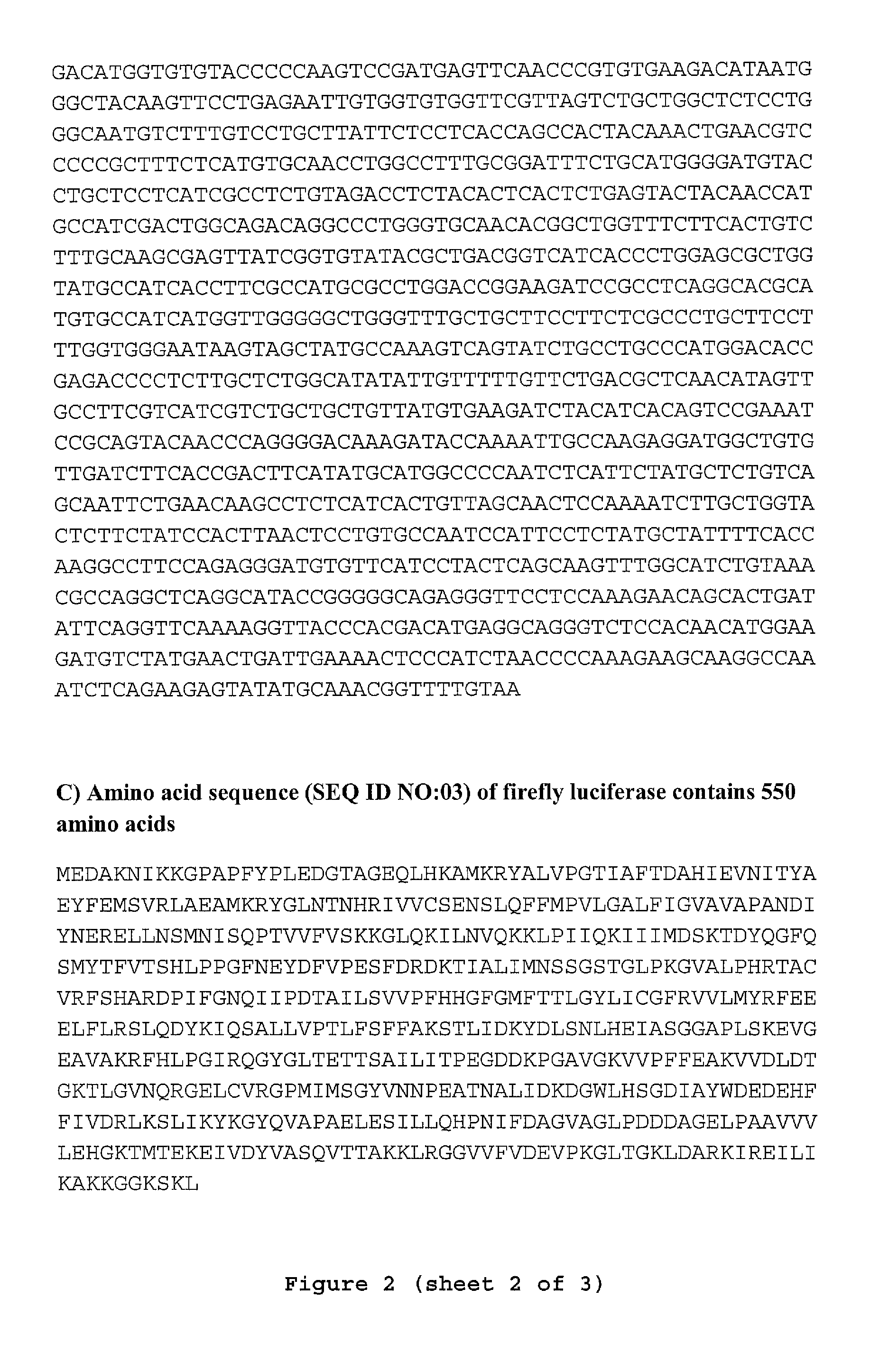Compositions and methods for detecting autoantibodies
a technology of autoantibodies and compositions, applied in the field of compositions and methods for detecting thyroid hormone blocking immunoglobulin, can solve the problems of unsatisfactory changes in the production of thyroid hormone, cumbersome techniques, and insufficient sensitivity and/or specificity
- Summary
- Abstract
- Description
- Claims
- Application Information
AI Technical Summary
Benefits of technology
Problems solved by technology
Method used
Image
Examples
example 1
Methods for Detecting TBI in a Sample
[0082]A stably transfected cell line (CHO-MC4) expressing a chimeric TSH-receptor (TSHR) and a CRE-dependent luciferase for detecting thyroid-stimulating immunoglobulins (TSI bioassay, Thyretain™) was previously described (U.S. Pat. Appl. Publication no. US 2008-0187942, published on Aug. 7, 2008). To develop a complementary thyroid-blocking antibody (TBI) bioassay, we compared the performance of the chimeric TSHR to a wild type (wt) TSHR.
[0083]CHO cells expressing a wt or chimeric TSHR and a CRE-dependent luciferase were isolated. Cells were grown at 37° C. for 15-18 hours and then incubated with bTSH, TSI, TBI, and / or patient serum. Luciferase expression was measured after incubation for 3 hours. Blocking activity was defined as percent inhibition of luciferase expression relative to induction with bTSH alone.
[0084]Both chimeric and wt cell lines showed induction of luciferase in response to bTSH in a dose-dependent manner, but displayed differ...
example 2
The Chimeric TSHR is More Useful than the Wild Type TSHR in Detecting TBI
[0104]A. Comparison of Detection Sensitivity of Thyroid Blocking Immunoglobulin (TBI) Assays with K1-70 Thyroid Blocking Monoclonal Antibody (MAb) in MC4 and TSHRwt Cells (H10)
[0105]A serially diluted thyroid blocking MAb K1-70, from 0.1 to 100 ng / ml, was tested with TBI assay in CHO-MC4 cells or H10 cells. The results are shown in FIG. 3.
[0106]All sample data were normalized with the background RLU of reaction buffer with 1:11 diluted normal serum. The percentage (%) inhibition was calculated as: (bTSH control RLU—sample RLU) / bTSH control RLU.
[0107]The results show that CHO-MC4 cells have much higher detection sensitivity to K1-70 than H10 cells. IC50 of CHO-MC4 cells was 7.5 times smaller than that of H10 cells.
[0108]B. Comparison of Detection Sensitivity of TBI Assay with a Blocking Antibody Containing Serum in MC4 and H10 Cells
[0109]Serum of one TBI positive patient was serially diluted from 1:22 to 1:90,00...
example 3
The Sensitivity of the Invention's TBI Assay is Higher than Competitive Binding Methods, Such as Kronus™ ELISA Assay
[0112]We conducted a comparison of thyroid blocking monoclonal antibody K1-70 dose response curves to compare the invention's TBI assay with the prior art's competitive binding methods, such as Kronus™ ELISA assay (TRAb assay). In this experiment, K1-70 stimulating monoclonal antibody is tested on both TBI assay in CHO-MC4 cells and TRAb assay (Kronus™). The results are shown in FIG. 5.
[0113]The results show that the IC50 of TBI assay with CHO-MC4 cells is 1.344 ng / ml, which is 22 times lower than that of TRAb assay, indicating CHO-MC4 cells have higher TBI detecting sensitivity than the TRAb assay.
PUM
 Login to View More
Login to View More Abstract
Description
Claims
Application Information
 Login to View More
Login to View More - R&D
- Intellectual Property
- Life Sciences
- Materials
- Tech Scout
- Unparalleled Data Quality
- Higher Quality Content
- 60% Fewer Hallucinations
Browse by: Latest US Patents, China's latest patents, Technical Efficacy Thesaurus, Application Domain, Technology Topic, Popular Technical Reports.
© 2025 PatSnap. All rights reserved.Legal|Privacy policy|Modern Slavery Act Transparency Statement|Sitemap|About US| Contact US: help@patsnap.com



